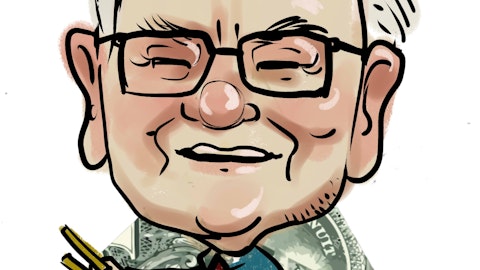One of the best aspects of earnings season is the opportunity to listen to conference calls hosted by companies you invest in. Doing so provides a rare glimpse into the temperament of the executives in charge and provides color to the otherwise monochromatic figures presented in a typical earnings release.
Over the last few days, two of the nation’s best banks, Wells Fargo & Company (NYSE:WFC) and U.S. Bancorp (NYSE:USB) , hosted their quarterly earnings calls. And while I’ve already covered the overarching details of their performances — click here for an analysis of Wells Fargo’s earnings and here for US Bancorp’s — I wanted to share one critical point that was stressed by the executives of both banks.

The importance of noninterest income
For many of you, saying that noninterest income is important is too obvious to warrant mention. Yet there’s both a growing chorus of discontent outside the industry over overdraft fees and checking account fees, and a school of thought within banking itself that belittles their significance.
Over the last few years, a series of lawsuits and regulations have greatly restricted banks’ abilities to charge for certain practices. In 2010, for example, Congress passed the Durbin Amendment to the Dodd-Frank Wall Street Reform and Consumer Protection Act, which caps interchange fees that lenders collect when credit card payments are processed. And at the end of 2011, Bank of America added its name to a growing list of lenders that have settled legal actions brought over the way in which overdraft fees on checking accounts had been assessed.
It’s not just those outside the industry who have minimized the importance of fees. Take Hudson City Bancorp as an example. Its business model was predicated on being fee-free. In the third quarter of last year, the New Jersey-based lender recorded $203 million in net interest income but only $3 million in noninterest income. As an important bookend to this story, Hudson City appears to have been effectively forced by regulators into selling itself to M&T Bank, a upstate New York-based regional lender that most assuredly doesn’t ascribe to the same model. The reason? Hudson City couldn’t make enough money to offset its souring mortgage portfolio.
The reality is, fees matter. And they matter for at least one reason: They serve as a hedge against declining interest rates. One of the main concerns of any bank investor is that banks’ net interest incomes are a function of interest rates in the broader economy — something individual institutions have absolutely no control over. As long-term rates go down, customers refinance at lower rates, and the bank’s net interest margin (NIM), and thus profitability, decline as well.
We’ve seen this with increasing regularity these days on the heels of the Federal Reserve’s third round of quantitative easing. The storyline for bank earnings these last two quarters has been all about falling NIMs. After Wells Fargo reported a 25-basis-point decline in its NIM for the third quarter of last year, investors sent its shares to the pillory. The same has been true for fourth quarter earnings, as both M&T and Wells Fargo reported outstanding fourth-quarter results but nevertheless saw their share prices decline — click here to see my take on M&T’s fourth-quarter earnings.



